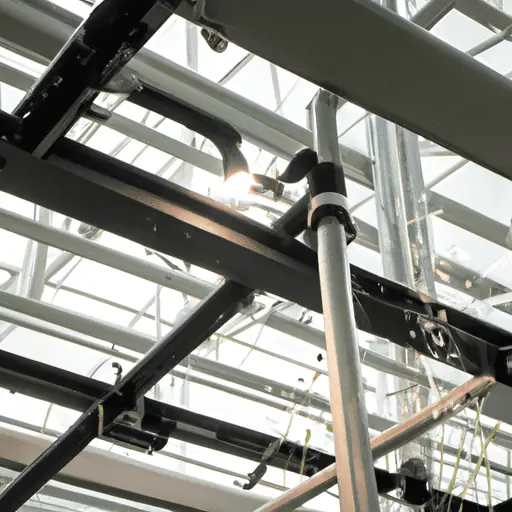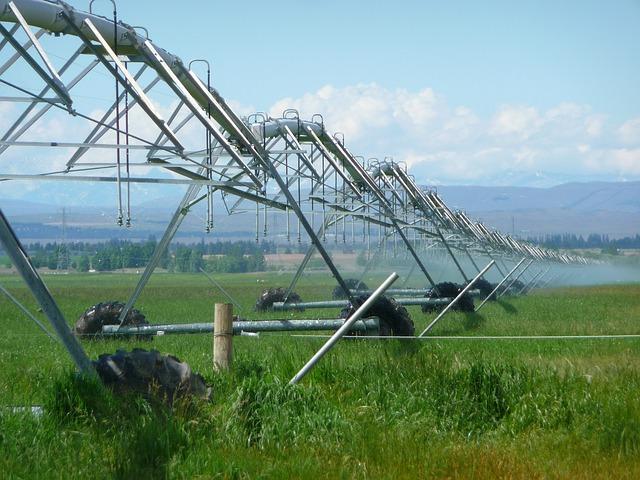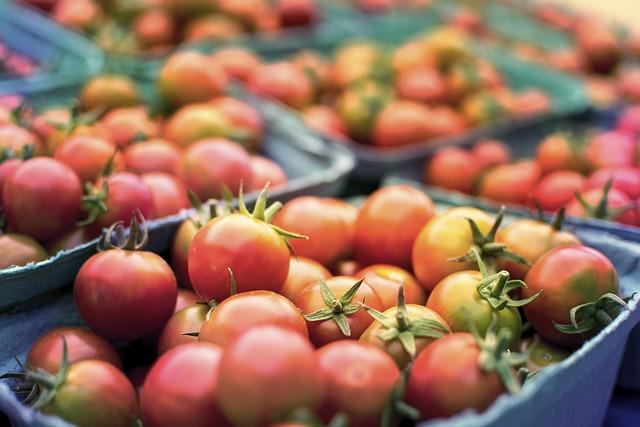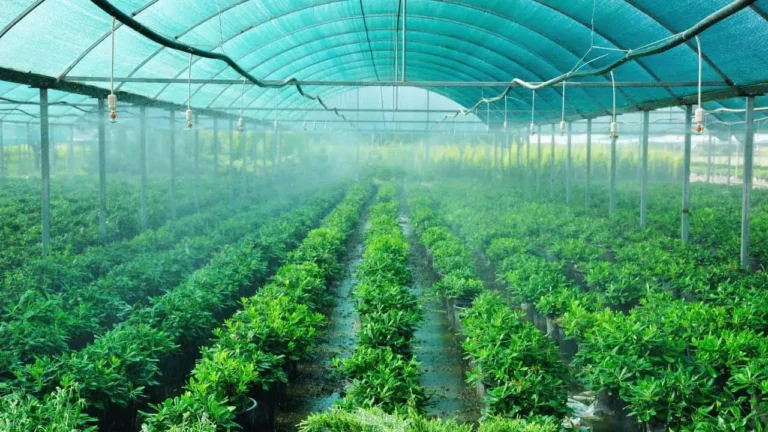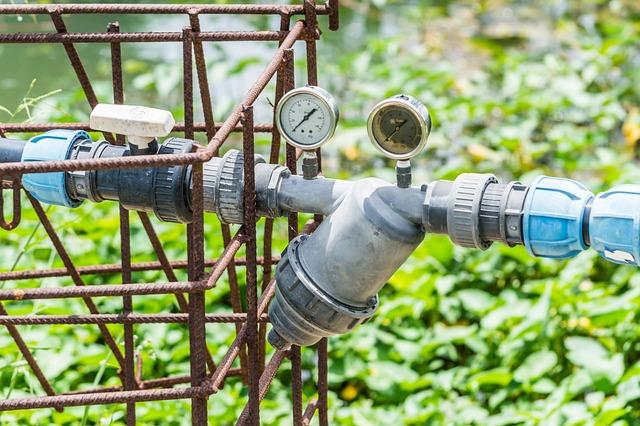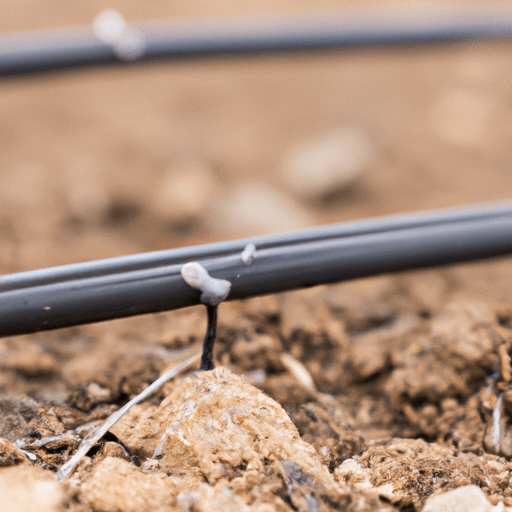This guide, ‘Principles of Irrigation Design’, aims to provide a comprehensive understanding of the underlying concepts of irrigation design. It explores the role of soil type, climate, crop type, and topography in shaping effective irrigation strategies. By delving into these essential elements, readers will gain a holistic approach to irrigation design, promoting sustainable water use and improved agricultural productivity.
Digging into the Basics: What is Irrigation Design?
Irrigation design is the process of planning and creating a system that efficiently delivers water to plants in agricultural or landscaping settings. It involves a careful balance of various factors, such as soil type, climate, crop type, and topography. The ultimate goal of irrigation design is to provide plants with the optimum amount of water they need for growth and development while minimizing water waste and maximizing water use efficiency.
At its core, irrigation design is about understanding the water requirements of plants and designing a system that meets those needs. This involves determining the appropriate irrigation method, such as drip irrigation, sprinkler irrigation, or surface irrigation, based on factors like the type of plants, soil conditions, and water availability.
Irrigation design also takes into account the distribution of water throughout the field or landscape. This includes deciding on the layout of pipes, valves, and emitters to ensure uniform water distribution and avoid overwatering or underwatering certain areas. Additionally, factors like water pressure, flow rates, and filtration systems are considered to optimize system performance.
Furthermore, irrigation design involves considering the availability of water sources and the means of water delivery. This may include utilizing groundwater, surface water, or reclaimed water, and determining the most efficient and sustainable methods of transporting water to the irrigation system.
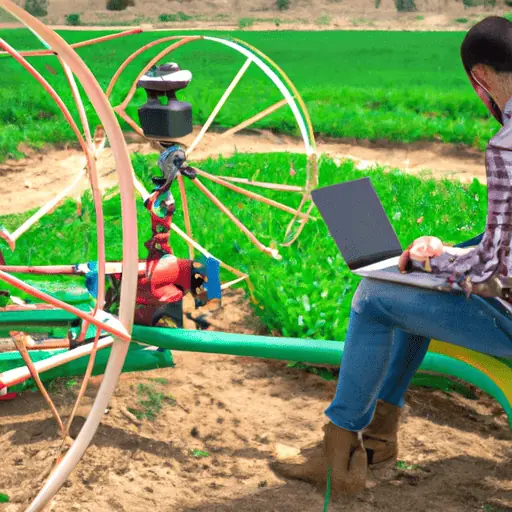
The Soil is the great connector of lives, the source, and destination of all – Wendell Berry: The Role of Soil Type in Irrigation Design
Soil type plays a crucial role in irrigation design as it directly affects water movement, retention, and availability to plants. Understanding the characteristics of different soil types is essential for designing an irrigation system that efficiently delivers water to plant roots.
- Water Movement:
The texture and structure of soil determine how water moves through it. Sandy soils, for example, have larger particles and allow water to pass through quickly, which can lead to leaching and water wastage. On the other hand, clay soils have smaller particles and tend to retain water, which can result in poor drainage and waterlogging. Loam soils strike a balance between sand and clay, allowing for optimal water movement and retention. - Water Retention:
Soil’s ability to retain water is influenced by its composition and organic matter content. Soils with higher organic matter, such as loam or silt, have better water-holding capacity. This is important in irrigation design as it determines the frequency and duration of irrigation cycles, ensuring that plants receive adequate moisture between watering events. - Water Availability:
Different soil types have varying abilities to make water available to plant roots. Sandy soils, for instance, do not hold water well and may require more frequent irrigation to compensate for the rapid drainage. Clay soils, on the other hand, can hold water for longer periods but may become compacted, reducing the availability of oxygen to plant roots. Understanding the water availability characteristics of various soil types is crucial in determining the irrigation schedule and water application rates.
Climate Matters: How Does It Influence Irrigation Design?
The climate is a crucial factor that significantly influences irrigation design. Understanding the climate conditions of a particular region helps determine the water requirements of plants and the irrigation methods that are most suitable.
Firstly, the amount and distribution of rainfall in a region play a vital role in irrigation design. In areas with high rainfall, the irrigation system may need to be designed with a focus on water conservation and drainage management. Conversely, in arid regions with low rainfall, the irrigation system must be designed to supplement the limited natural water supply and ensure plants receive sufficient moisture to thrive.
Secondly, temperature variations can impact the water needs of plants and the efficiency of irrigation systems. Higher temperatures increase evaporation rates, leading to higher water loss. This necessitates the design of irrigation systems that deliver water more efficiently, such as using drip irrigation or soil moisture sensors to minimize water evaporation and optimize water usage.
Additionally, the duration and intensity of the growing season in a particular climate influence irrigation design. Longer growing seasons may require irrigation systems that can provide a consistent water supply throughout the extended period. On the other hand, shorter growing seasons may require irrigation methods that deliver water more rapidly to ensure plants receive adequate moisture within a limited timeframe.
Understanding the climate’s influence on irrigation design also involves considering factors such as humidity levels, wind patterns, and the occurrence of extreme weather events. These factors can affect the rate at which plants lose moisture through transpiration and the efficiency of irrigation methods such as sprinkler systems.
Is One Crop’s Irrigation Strategy Another’s Water Waste? Understanding Crop Specificity in Irrigation Design
When it comes to irrigation design, it is crucial to consider the specific water requirements of different crops. Each crop has unique characteristics and growth patterns that influence its irrigation needs. Failing to tailor the irrigation strategy to the specific crop can result in water waste, inefficient water usage, and potential plant damage.
One of the key factors to consider is the crop’s root depth. Some crops, like tomatoes or peppers, have shallow root systems, while others, like corn or sunflowers, have deep-rooted structures. Understanding the root depth helps determine the appropriate irrigation method and frequency. Shallow-rooted crops may benefit from more frequent but lighter irrigation, while deep-rooted crops may require less frequent but deeper watering.
The crop growth stage also plays a significant role in irrigation design. Different crops have varying water requirements during different stages of growth, such as germination, vegetative growth, flowering, and fruiting. Adjusting the irrigation strategy to match the crop’s growth stage ensures that water is provided when it is most needed, optimizing plant health and minimizing water waste.
Furthermore, the type of soil in which the crops are grown influences irrigation design. Soil characteristics, such as texture, composition, and drainage capacity, affect water retention and availability to the plants. Sandy soils, for example, drain water quickly and may require more frequent irrigation, while clay soils retain water for more extended periods, necessitating less frequent watering.
Finally, crop sensitivity to water stress and tolerance to excess moisture should be taken into account. Some crops are more sensitive to water stress and require consistent moisture levels to avoid yield reduction or quality loss. Others may be more tolerant to drought conditions or excessive moisture. Understanding these factors guides the irrigation design to provide the appropriate amount of water without under or overwatering the crops.
How Does Topography Sculpt Our Irrigation Designs?
Topography, the physical features of the land, plays a significant role in shaping irrigation designs. The natural contours, slopes, and elevation of the land influence how water moves across the terrain and how it can be effectively distributed to the crops. By understanding and working with the topography, irrigation designs can be optimized for efficient water distribution and drainage.
One key consideration is the slope of the land. The slope determines the flow of water, and irrigation systems need to be designed in a way that allows water to be evenly distributed across the field. On steep slopes, erosion and water runoff can be a challenge, requiring the use of terraces, contour plowing, or other erosion control measures. On the other hand, flat or gently sloping land may require different irrigation methods to ensure proper water penetration and prevent waterlogging.
Another factor influenced by topography is the availability of water sources. The location and elevation of water sources such as rivers, lakes, or wells impact the feasibility of irrigation systems. If the water source is at a higher elevation than the fields, gravity-fed irrigation systems can be employed, reducing the need for pumps and energy consumption. Conversely, if the water source is at a lower elevation, pumping systems may be necessary to lift the water to the desired irrigation areas.
The shape and size of the fields are also influenced by topography. Irregularly shaped fields may require different irrigation layouts compared to square or rectangular fields. The placement of irrigation equipment such as sprinklers, drip lines, or canals needs to be carefully planned to account for the land’s contours and ensure uniform water distribution.
Moreover, topography affects the drainage patterns of the land. Areas with poor natural drainage may require additional measures, such as installing drainage ditches or using raised beds, to prevent waterlogging and ensure proper soil aeration.
Can We Design Irrigation Systems without Considering Topography?
Considering topography is crucial when designing irrigation systems. Ignoring the influence of topography can lead to inefficient water distribution, poor drainage, and increased erosion risks. Topography directly affects the flow of water and the overall effectiveness of irrigation systems. By understanding the landscape’s natural features, irrigation designers can make informed decisions that maximize water efficiency and crop productivity.
Topography determines the slope of the land, which directly impacts water movement. Without considering topography, irrigation systems may fail to distribute water evenly, resulting in areas of over-watering and under-watering. This can lead to plant stress, reduced yields, and wasted water resources. Additionally, inadequate consideration of topography can cause water to accumulate in lower-lying areas, leading to waterlogging and root damage.
Furthermore, topography influences the placement of irrigation equipment. Without factoring in the land’s contours, the positioning of sprinklers, drip lines, or canals may not effectively cover the entire field. This can result in uneven irrigation and patchy crop growth. In contrast, by taking topography into account, designers can strategically position irrigation components to ensure uniform water distribution and maximize crop health.
Additionally, topography plays a role in drainage. Neglecting topography can lead to poor natural drainage, increasing the risk of soil erosion and water runoff. By considering topography, designers can implement measures such as contour plowing, terracing, or drainage ditches to manage water flow and prevent soil erosion. These practices help maintain soil health and reduce the loss of valuable topsoil.
What is the Future of Irrigation Design?
The future of irrigation design holds great potential for advancements that address the increasing challenges of water scarcity, climate change, and sustainable agriculture. With the ever-growing global population and the need to feed a hungry planet, irrigation design will play a crucial role in maximizing water efficiency and optimizing crop production.
One of the key focuses of the future of irrigation design will be the integration of smart technologies. These technologies will enable real-time monitoring and control of irrigation systems, allowing for precise and efficient water management. Sensors, weather forecasts, and data analytics will provide valuable insights to optimize irrigation schedules, prevent water wastage, and detect potential issues such as leaks or clogs.
Another aspect that will shape the future of irrigation design is the emphasis on water conservation. With water becoming increasingly scarce, designing irrigation systems that minimize water usage while maintaining crop productivity will be paramount. This may involve the use of precision irrigation techniques such as drip irrigation or micro-sprinklers, which deliver water directly to the roots of plants. Additionally, the integration of water-saving technologies like rainwater harvesting or greywater recycling systems will become more prevalent.
Furthermore, the future of irrigation design will also focus on sustainable practices that promote soil health and environmental stewardship. There will be a greater emphasis on regenerative agriculture techniques that improve soil structure, enhance water retention, and reduce the need for synthetic fertilizers and pesticides. Precision application of water and nutrients based on soil moisture and plant needs will be a key aspect of sustainable irrigation design.
Irrigation design is a multifaceted discipline, requiring a nuanced understanding of different variables. By understanding the role of soil type, climate, crop type, and topography in irrigation design, one can conceptualize and implement efficient, sustainable irrigation systems. This guide serves as a foundation for such knowledge, opening the door to more advanced studies and practical applications of irrigation science.

